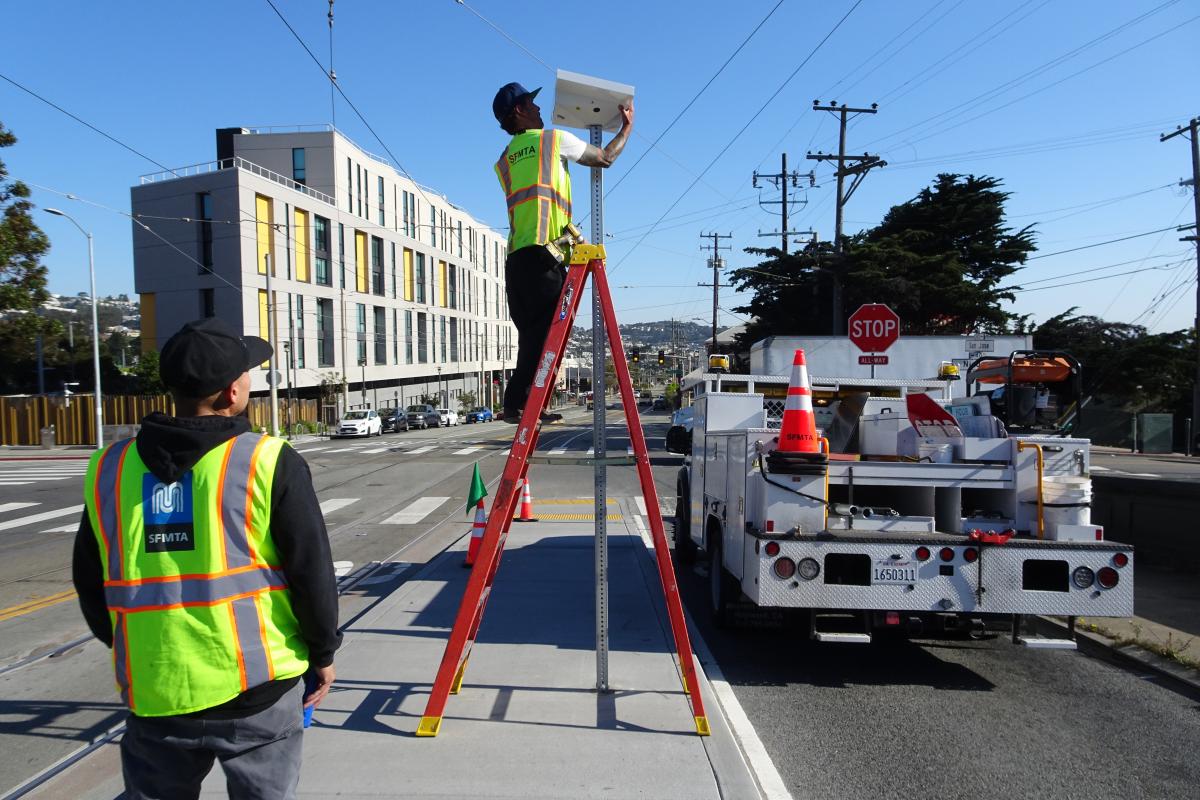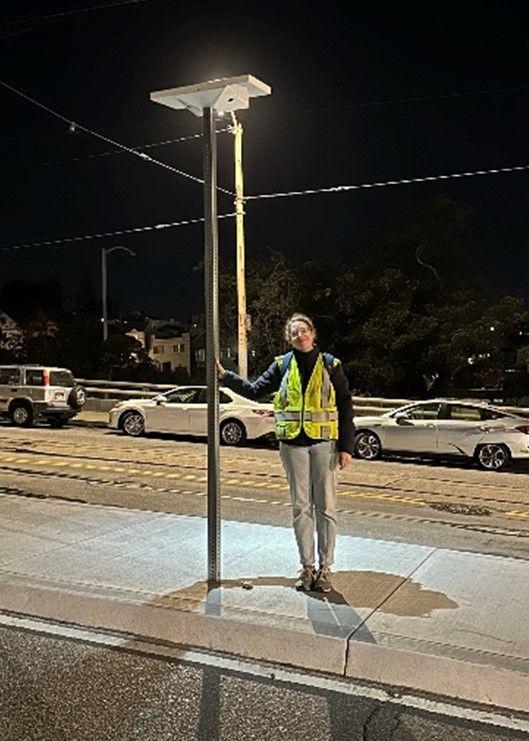Visit our test light at San Jose Ave. & Niagara Ave. and take this short survey to tell us what you think! If we like how this solar light performs, we may pilot it in other locations.
Take this survey to share your feedback

Photo of two SFMTA staff on a boarding platform. One is on a ladder installing a solar panel on top of a pole while another observes.
The Muni Stop Lighting Project aims to improve lighting at Muni stops for greater customer safety and a better experience while waiting for Muni.
The Muni Stop Lighting Project will:
- Develop a lighting policy for Muni stops
- Test new cost-effective lighting options for Muni stops
- Implement a comprehensive systemwide lighting program for Muni stops
- Current
Safety is ranked as a major priority by 80% of Muni customers surveyed in 2024, but only 42% ranked safety and security on Muni good or better. Currently, roadway lighting, transit zone lighting and shelter lighting are highly variable and, in many cases, outdated, insufficient and inconsistent.
Improving lighting at Muni stops has been found to improve safety and increase feelings of safety, especially for women, girls, LGBTQ+ individuals, seniors and other vulnerable populations in a scalable and cost-effective way. This aligns with the aims of the Safety Equity Initiative and Muni Customer Experience strategies.
Many nighttime riders are low-income people of color, and these demographics are riding Muni more than before the pandemic. As of 2024, 87% of Owl riders are low-income earners, versus 71% of daytime riders. Of Owl riders, 70% are people of color versus 57% of daytime riders.
The Muni Stop Lighting Project will develop guidelines about lighting types, lighting locations, and suggested minimum levels of lighting at stops, in line with most peer agencies. The project will explore ways to install different types of lighting at Muni stops. The project will also test and implement low-cost, quick-to-install solar lighting kits that can work even in poor weather conditions.

SFMTA staff person stands under the lit pilot solar light installed on a boarding platform.
Project Phases and Timeline
October 2024 – April 2025: Proof of Concept
- Solar light proof of concept on M Ocean View and M Ocean View Bus at San Jose Ave & Niagara Ave
2025: Design
- Evaluate proof of concept
- Identify next transit stops for lighting
- Finalize and publish stop lighting guidelines
- Engage partner agencies over potential transit lighting delivery models
2025 onward: Installation
- At least 1-2 locations for improved transit lighting per year, depending on project delivery model and lighting type